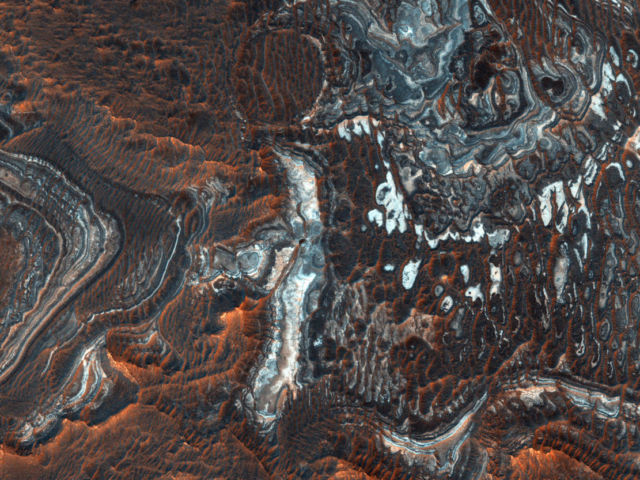
Another stunning picture of Mars that shows plains North of the Southwestern Juventae Chasma, a canyon part of the gigantic Valles Marineris system.
There are three distinct terrains in this image, plains with possible inverted channels, plains with exposed layers, and layers on a wall of Juventae Chasma.
The top half of the image contains plains with craters and sinuous ridge features that are possibly inverted stream channels. Inverted relief occurs when a formerly low-lying area becomes high-standing. There are several possible reasons why channels might stand out in inverted relief. The streambed material may become cemented by precipating minerals, contain larger rocks, or become filled with lava, all which are more resistant to erosion. Finer-grained, more erodable material surrounding the channel is blown away by the wind or carried away by water, leaving the resistant channel bed high and dry around its environs.
Another example of erosion can be seen in the next terrain which covers about 2/3 of the bottom half of the image. Erosion has exposed a beautiful series of light and dark tone layers (approximately 1 kilometer across). In the cutout, the smallest of the rings is the deepest exposed layer.
Layers are common in the Martian canyons, but it is unknown what process formed them. It is likely that the layers in the plains here are made of the same material as the layer in the canyons.
source University of Arizona/LPL





Leave A Comment